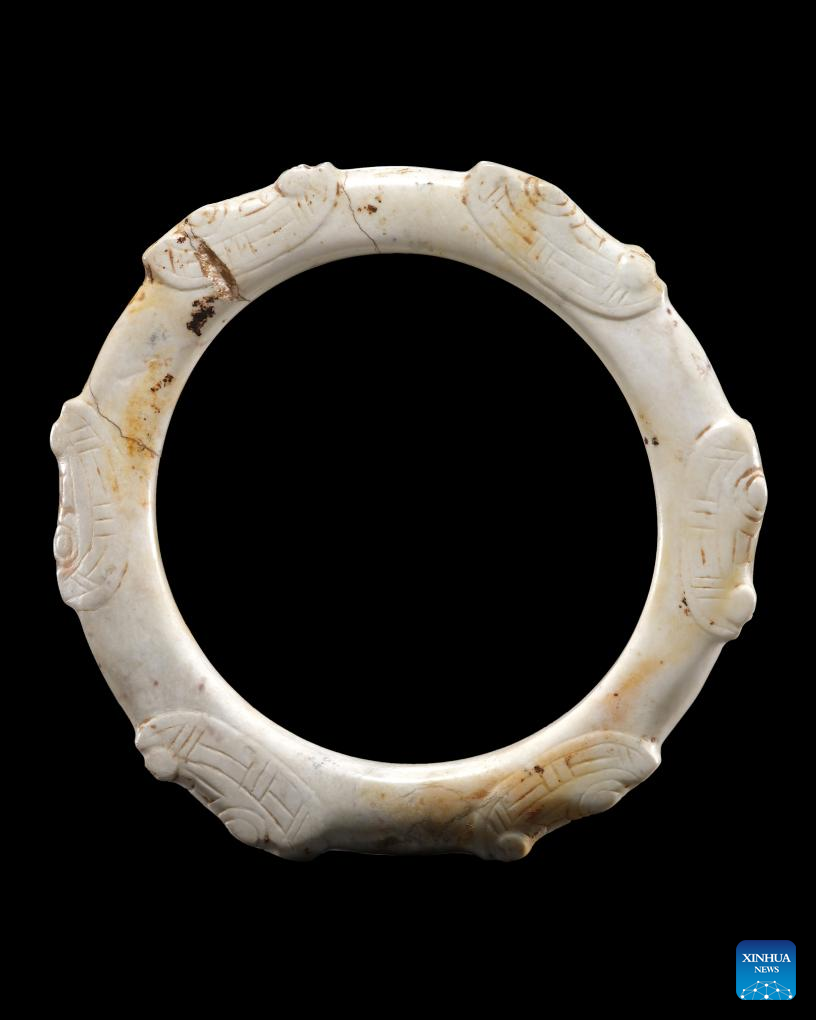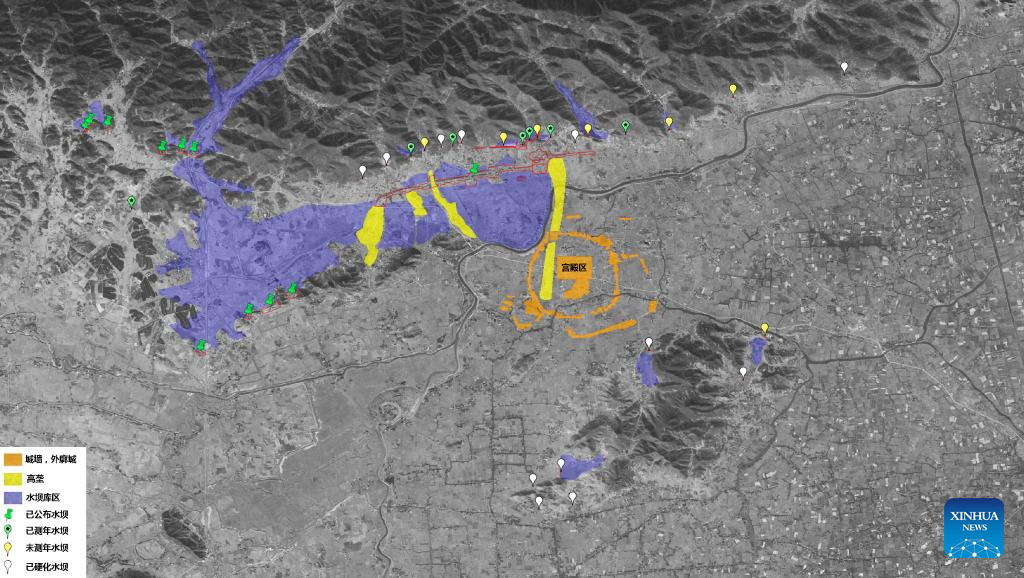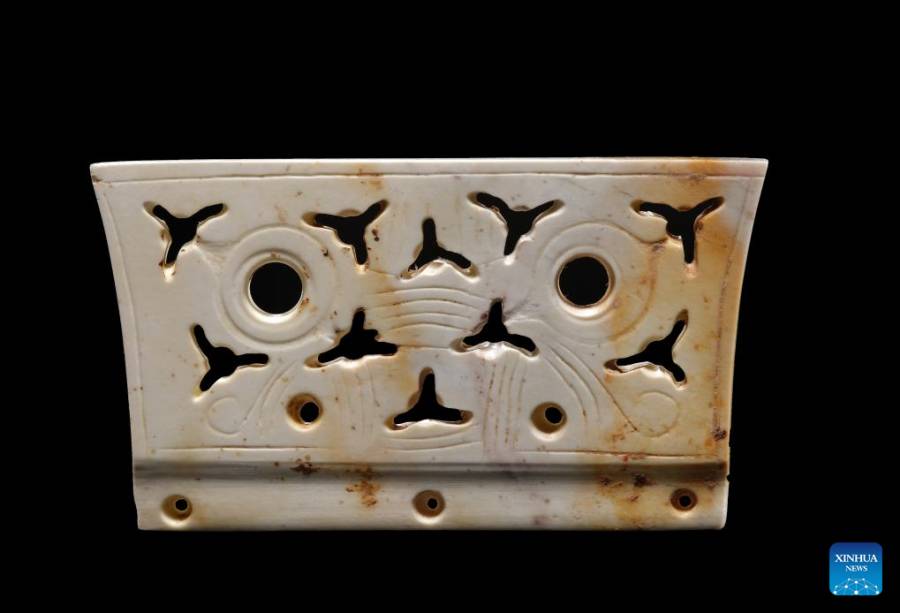![]() This file photo shows a cultural relic unearthed from the Liangzhu ruins in east China’s Zhejiang Province.
This file photo shows a cultural relic unearthed from the Liangzhu ruins in east China’s Zhejiang Province.
Sat 02 October 2023:
China’s National Cultural Heritage Administration on Wednesday unveiled new archaeological discoveries at the ruins of Liangzhu ancient city and its water conservancy system.
The recent findings have provided a preliminary understanding of the three development phases of the Liangzhu ruins starting from scattered settlements, to the construction of a water conservancy system, and eventually the erection of the Liangzhu ancient city.
The Liangzhu ruins, located in east China’s Zhejiang Province, have gained the world’s recognition as a testimony to the existence of Chinese civilization at least 5,000 years ago. They have been inscribed on the UNESCO World Heritage List.
Since 2020, Chinese researchers have been excavating the sites located south of the Liangzhu ancient city, including Beicun, Fenghuangshan, and Nanwangmiao. The sites date back to about 5,500 to 5,000 years ago, all before the construction time of the Liangzhu ancient city.
The workers who built the Liangzhu ancient city might have lived at the sites, said Fang Xiangming, head of the Zhejiang provincial institute of cultural relics and archaeology.
At the Fenghuangshan Site, the archaeologists found 30 tombs and 47 ash pits, while they unearthed 59 tombs and some pillar holes of buildings. Notably, the researchers discovered a tomb with rich burial objects, including valuable jade ware, at Beicun Site. The tomb is believed to have belonged to a female having a relatively high social status.
Previous studies have found China’s hitherto earliest large-scale water conservancy system in the northwest of the Liangzhu ancient city.
During recent excavation around the Liangzhu ruins, the researchers have discovered nearly 20 ancient dams. Seven of these newly-found dams can be dated back to approximately 5,000 years ago and are part of the same local water conservancy system.
Surprisingly, one of the dams had stones built on its side slope facing the water, supposedly a specific measure to cope with the impact of the transient floods, said Wang Ningyuan from the provincial institute of cultural relics and archaeology, who is also in charge of the archaeology project on the Liangzhu ancient city and its water conservancy system.
Archaeological discoveries and research findings in recent years have revealed the evolution of the concept of settlement management and urban construction, as well as the belief system of the Liangzhu people.
The findings also help show the significance of the Liangzhu Culture in the origin of Neolithic civilization in China, said Fang Xiangming.

This file photo shows a bracelet unearthed from the Liangzhu ruins in east China’s Zhejiang Province. (National Cultural Heritage Administration/Handout via Xinhua)
China’s National Cultural Heritage Administration on Wednesday unveiled new archaeological discoveries at the ruins of Liangzhu ancient city and its water conservancy system.
The recent findings have provided a preliminary understanding of the three development phases of the Liangzhu ruins starting from scattered settlements, to the construction of a water conservancy system, and eventually the erection of the Liangzhu ancient city.
The Liangzhu ruins, located in east China’s Zhejiang Province, have gained the world’s recognition as a testimony to the existence of Chinese civilization at least 5,000 years ago. They have been inscribed on the UNESCO World Heritage List. (National Cultural Heritage Administration/Handout via Xinhua)

This picture shows a water conservancy system and the structure of the middle and late phases of the Liangzhu ruins in east China’s Zhejiang Province. China’s National Cultural Heritage Administration on Wednesday unveiled new archaeological discoveries at the ruins of Liangzhu ancient city and its water conservancy system.
The recent findings have provided a preliminary understanding of the three development phases of the Liangzhu ruins starting from scattered settlements, to the construction of a water conservancy system, and eventually the erection of the Liangzhu ancient city.
The Liangzhu ruins, located in east China’s Zhejiang Province, have gained the world’s recognition as a testimony to the existence of Chinese civilization at least 5,000 years ago. They have been inscribed on the UNESCO World Heritage List. (National Cultural Heritage Administration/Handout via Xinhua)
Source: Xinhua
______________________________________________________________
FOLLOW INDEPENDENT PRESS:
WhatsApp CHANNEL
https://whatsapp.com/channel/0029VaAtNxX8fewmiFmN7N22
![]()
TWITTER (CLICK HERE)
https://twitter.com/IpIndependent
FACEBOOK (CLICK HERE)
https://web.facebook.com/ipindependent
Think your friends would be interested? Share this story!





